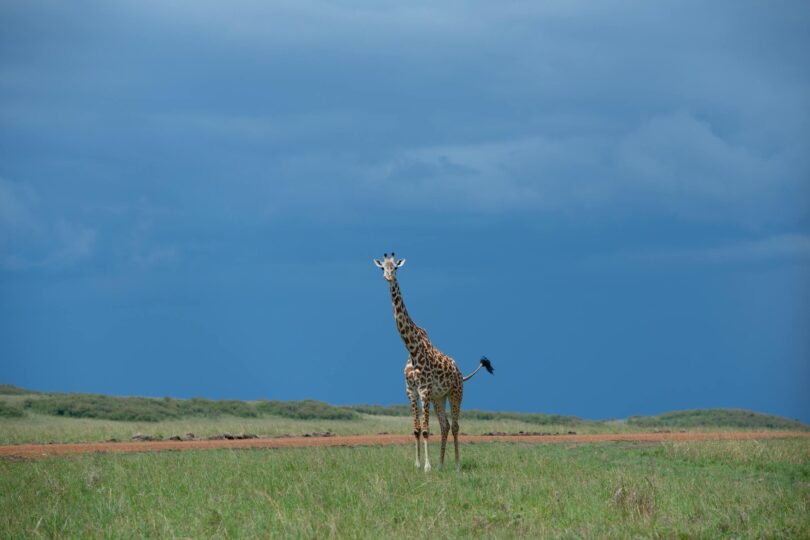The world is facing an unprecedented extinction crisis, driven largely by human activities. Scientists warn that we are currently experiencing the sixth mass extinction, with species disappearing at rates 100 to 1,000 times faster than natural background rates due to anthropogenic influences. This article explores the key human activities contributing to biodiversity loss and highlights the urgent need for conservation efforts to protect our planet’s ecosystems.
Key Human Activities Driving Extinction
- Habitat Destruction
Habitat loss is the most significant threat to biodiversity. As human populations expand, natural habitats are converted for agriculture, urban development, and infrastructure projects. The World Wildlife Fund (WWF) reports that nearly 50% of the Earth’s land surface has been transformed for human use, fragmenting ecosystems and putting countless species at risk. Deforestation, particularly in tropical regions, has devastating effects on wildlife populations, leading to loss of biodiversity and ecosystem services. - Pollution
Pollution from agricultural runoff, industrial waste, and plastic litter severely impacts ecosystems and wildlife. Chemicals such as pesticides and fertilizers can contaminate water sources, harming aquatic life and disrupting food chains. The United Nations Environment Programme (UNEP) emphasizes that plastic pollution has become ubiquitous, with microplastics found in the most remote environments. This pollution not only threatens species but also affects human health as contaminants enter the food chain. - Climate Change
Climate change is increasingly recognized as a significant driver of biodiversity loss. Rising temperatures, shifting precipitation patterns, and extreme weather events alter habitats and threaten species survival. According to the Intergovernmental Panel on Climate Change (IPCC), many species are unable to adapt quickly enough to these changes, leading to population declines and increased extinction risk. For example, coral reefs, which are highly sensitive to temperature changes, are experiencing widespread bleaching events due to global warming. - Overexploitation
Unsustainable hunting, fishing, and harvesting practices put immense pressure on wildlife populations. Overfishing has led to the depletion of numerous fish species, disrupting marine ecosystems and threatening food security for millions of people. The International Union for Conservation of Nature (IUCN) highlights that overexploitation is one of the primary causes of extinction for many terrestrial and marine species. - Invasive Species
The introduction of non-native species can disrupt local ecosystems and lead to the decline of native species. Invasive species often outcompete indigenous flora and fauna for resources, resulting in significant ecological imbalances. The Global Invasive Species Programme notes that invasive species are responsible for about 40% of all documented extinctions.
Protecting Biodiversity: Strategies for Action
- Conservation Efforts
Protecting natural habitats through the establishment of protected areas is critical for conserving biodiversity. The Convention on Biological Diversity (CBD) aims to protect 30% of the planet’s land and ocean by 2030. Effective management of these areas can help preserve ecosystems and provide refuges for threatened species. - Sustainable Practices
Implementing sustainable agricultural and forestry practices can mitigate habitat destruction and overexploitation. Agroforestry, organic farming, and sustainable logging methods not only reduce environmental impacts but also enhance resilience against climate change. The Food and Agriculture Organization (FAO) advocates for practices that maintain ecosystem health while meeting human needs. - Pollution Reduction
Reducing pollution through improved waste management and regulations on chemical usage is essential for protecting biodiversity. Initiatives to reduce plastic consumption, promote recycling, and limit agricultural runoff can significantly improve environmental quality. The UNEP has launched campaigns to raise awareness about plastic pollution and encourage sustainable alternatives. - Combatting Climate Change
Addressing climate change through emissions reductions and sustainable energy transitions is vital for protecting biodiversity. International agreements like the Paris Agreement aim to limit global warming, helping to safeguard ecosystems and the species that inhabit them. Renewable energy sources, such as solar and wind, provide cleaner alternatives that reduce dependence on fossil fuels. - Community Engagement
Engaging local communities in conservation efforts is crucial for long-term success. Community-led conservation initiatives empower people to protect their natural resources, fostering a sense of stewardship. The World Resources Institute (WRI) highlights that involving indigenous peoples and local communities can lead to more effective and equitable conservation outcomes.
Conclusion
The extinction crisis is a complex challenge driven by human activities that require urgent action. Protecting our planet’s biodiversity is essential not only for the health of ecosystems but also for the well-being of humanity. By implementing sustainable practices, enhancing conservation efforts, and addressing the root causes of biodiversity loss, we can work towards a more sustainable future that honors and protects the rich tapestry of life on Earth.








Leave a Comment